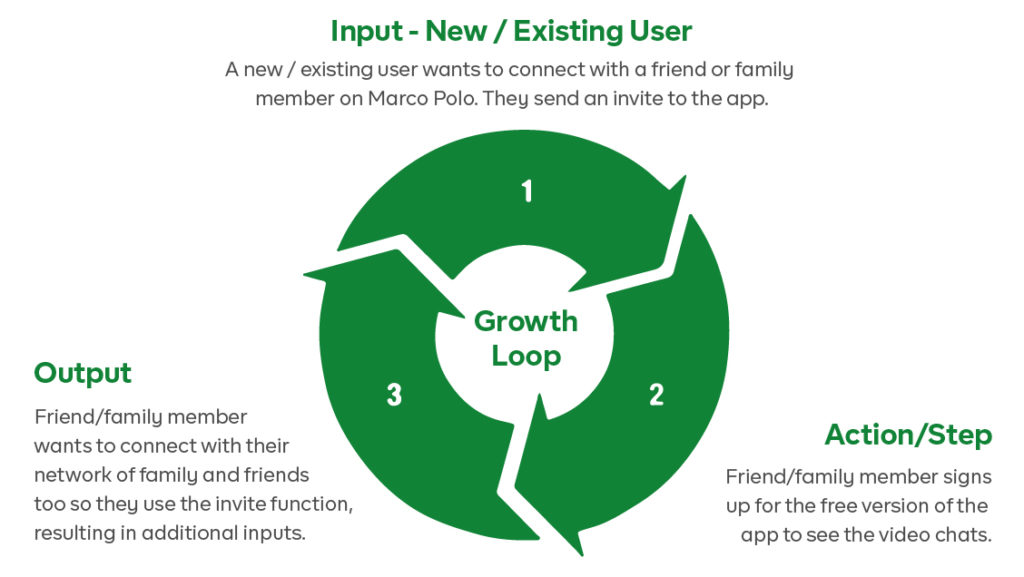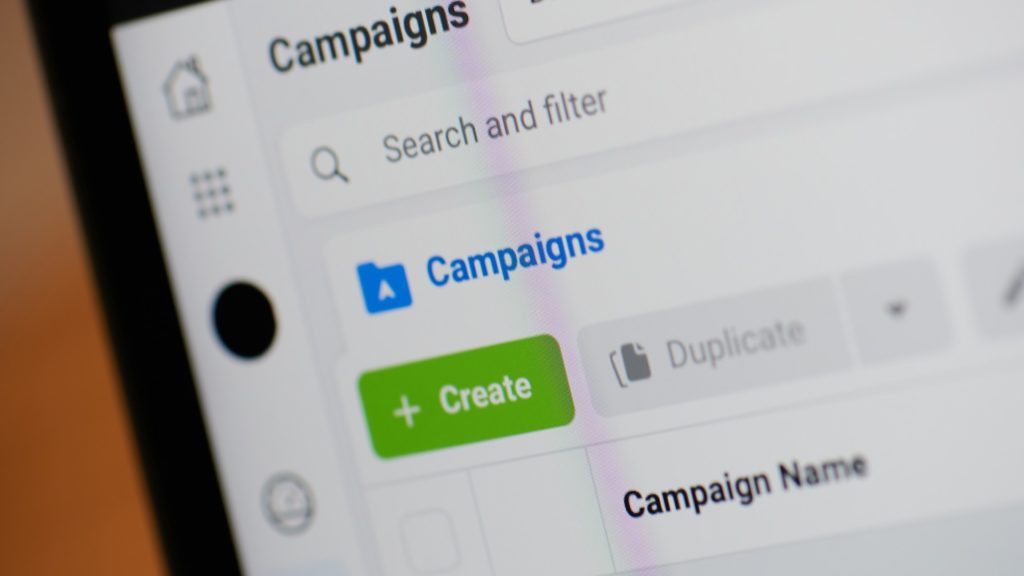
A move from traditional marketing and sales funnels to growth loops is changing the acquisition game for product-led companies. Instead of investing time and money into funnel-based marketing efforts that bring stagnant users into the product, growth marketers are ramping up efforts designed to capture engaged users that bring in more users through a loop-based framework for product growth.
The concept of Growth Loops has existed for years, but many digital marketers are just starting to catch on. The ideas found in this article have been popularized by the brilliant folks over at Reforge. If you’re looking for a cohort-based solution, developed by top leaders in tech, to unlock your company’s growth potential — look no further than Reforge. If you’re looking for an agency partner to do the heavy lifting for you – get in touch to schedule your free Product Growth Strategy Meeting today!
Loops turn product growth upside down — in a good way. Find out more about this powerful growth hacking strategy below, including types of loops and how switching to this model changes your entire approach to product growth.
How Is a Growth Loop More Powerful Than a Funnel?

Traditional AAARRR funnels cast a wide net before drilling down to conversions and referrals. They follow the model:
- Awareness. You work to get your product noticed by potential users.
- Acquisition. You engage those users and sell them on the benefits and features of the product.
- Activation. Users take a conversion action, such as signing up for a free trial or downloading your product.
- Retention. Users return to your product, making a purchase or continuing a subscription.
- Revenue. You close sales to take in revenue and find ways to upsell, such as converting users from freemium or basic products to premium products.
- Referral. You work to get existing users to invite others to try your product.
The funnel is a linear and logical approach to marketing products — and one that’s been around for decades. But it has some limitations, particularly for companies looking to engage in viral and organic growth. One of the biggest disadvantages of funnel approaches is that they create silos among marketing and other departments, most commonly the sales department. When each area has its own success metrics, internal departments and efforts can compete against each other.
For example, marketing may be tasked with bringing leads into the funnel while sales is tasked with converting those leads. If marketing’s most critical metric is how many leads are generated, there’s a risk that it may generate quantity over quality. This results in many low-quality leads that sales has to dig through to find ones that can convert.
Casting a wide net and converting a few people later in the funnel can also waste resources. As each prospect makes it way through the funnel, effort is expended. But many leads won’t convert, reducing the efficacy of those efforts overall.
Growth loops help solve these issues while driving sustainable compounding and viral product growth. A growth loop follows this model:
- Input. A new or returning user is converted based on reinvestment of a previous output.
- Action or step. The new or returning user engages in a series of actions or steps that eventually create a new output.
- Output. The result of those actions creates an output that can be reinvested to drive new inputs, generating a growth loop that continuously creates more inputs.
To understand the concept of a growth loop, consider it in a real-life scenario. One example is the video-chat app Marco Polo, which saw gains as high as 745% per week during the beginning of the COVID-19 pandemic.

Adapted from Reforge
Here’s how a growth loop might work with Marco Polo:
- Input. An existing user wants to connect with a friend or family member on Marco Polo. They send an invite to the app, which makes it easy to invite anyone you’re already connected with by phone or other apps via one or two taps on the mobile screen.
- Action or step. You have to sign up for the free version of the app to see the video chats someone may have sent you. The invited user may sign up to connect with their friend or loved one.
- Output. Having used the app, the new user may want to connect with others in the same way. They would then use the invite function, driving additional inputs.
It’s a simple concept but one that worked well for Marco Polo. Without investing in traditional marketing, the growth team grew its user base to millions.
Understanding Types of Growth Loops

Not all growth loops are the same, and not every product can rely solely on the viral invitation structure that works well with social media apps. Consider these four types of growth loops when you’re thinking about implementing such marketing approaches for your organization.
1. Content Growth Loops

Content growth loops work by creating and distributing content to attract new users to your product. The basic steps of a content loop are: new users sign up, content is created, and that content is then distributed in a way that will attract even more new users.
Sounds simple enough, right? Well, when creating a content growth loop, it’s important to understand two things:
- Who is making the content?
- Who is responsible for distributing it?
In other words: are we taking the revenue earned from our users to reinvest in generating content to distribute? Or are we taking content that our users create and then distributing it to a larger audience?
When we start thinking about content growth loops in this way, you can easily see how these loops can vary greatly depending on who is responsible for creating or generating content. With this in mind, there are four types of content loops we can consider:
- UG-CD-SEO
- User Generated – Company Distributed content usually means the company is taking user-generated content and distributing it to search engines to generate SEO traffic.
- UG-UD-Social
- User Generated – User Distributed content represents users making and distributing content to social channels to attract new users.
- CG-CD-SEO
- Company Generated – Company Distributed content generally means the company is making and distributing content, usually over email, social, or search.
- CG-UD-Social
- Company Generated – User-Distributed content typically means the company is generating the content, but users are the ones who distribute and amplify the content, mostly via social channels.
It’s worth noting that these content loops aren’t mutually exclusive, you can and often will combine multiple types of content loops to create more effective content ecosystems.
For example, Pinterest has two major loops working together to attract and engage new users:
- The first is a user-generated, company-distributed loop where Pinterest users are generating content by pinning interesting or helpful things for other users to interact with, but the company is packaging that content for search engines, thereby attracting new users to Pinterest.
- The other is a user generated, user-distributed loop where Pinterest users are creating the content by pinning interesting or helpful things for other users to interact with and then distributing and sharing that content to other social channels like Facebook or Twitter.
2. Paid Acquisition Growth Loops

Paid acquisition growth loops rely on driving new users via paid methods, such as Google or Facebook ads. The revenue generated by conversions on those ads can be reinvested to fund more ads, creating a circular loop that brings in increasing numbers of users.
This method works best when you pair it with other types of growth loops. For example, you get more for your investment when users can invite others or drive more growth by creating content. That way, each user you convert via ads brings additional users into the fold.
3. Viral Growth Loops

Viral growth loops occur when people sign up and recommend a product to others. Social media sites are a prime example of this type of growth loop. People sign up for Instagram, Facebook or newer social sites like Telegram. The entire point of social media is to connect with others online, so those users organically invite others to join them. Eventually, successful social media sites become viral, garnering millions or even billions of users.
These types of growth loops aren’t limited to social media, though. Business users have created viral growth for products like Slack and Zoom, for example. Can you imagine using Slack with just one or two people? The viral growth loop is built right into the product – unlocking extraordinary growth.
Another great example of a viral loop is used by WordPress, the largest blogging platform on the web. This type of loop is called a “casual contact viral loop” and it works like this:
- People build sites and blogs on WordPress.
- Default WordPress themes contain “Proudly powered by WordPress” in the footer.
- Others visit those sites and notice that they were built on WordPress.
- People who want to build their own sites or blogs look to WordPress as an option, often based solely on the fact that this is what others are doing.
Obviously, this isn’t the only marketing tactic employed by WordPress. But it’s definitely part of the reason WordPress has more than 500 new sites a day and accounts for more than 30% of websites on the internet.
4. Sales Growth Loops

Sales growth loops occur when a sales team brings in high-value contracts or users. The revenue from those acquisitions is invested into additional sales resources to help scale growth in the future.
But what makes a user or contract “high-value”? How can we as growth marketers make sure we are investing properly to attract the right users? For starters, we must understand how one group of users will lead to the next group of users.
For example, let’s compare two hypothetical sales initiatives:
- Initiative A: Your investment in this initiative gives you 500 new engaged users this week, but nothing beyond that initial uptick. To replicate this success will require consistent investment in acquiring new users.
- Initiative B: Your investment in this initiative gives you 20 new users in week one, 22 in week 2, and continues to bring in new users each week with a compound growth rate of 10% with no additional investment.
If given the chance, which would you choose?
Initiative A may seem like the more attractive solution at a glance, but Initiative B is actually the better option in the long-run. Sure, it would be nice to get 500 new engaged users, but if your initiative requires constant investment, it’s not sustainable growth. This highlights the difference between thinking in funnels vs. thinking in loops.
Rather than constantly looking for your next short term gain, loops help you start identifying the processes that will compound over time and produce better, more sustainable results.
Benefits of Growth Loops

Integrating growth loop models into your product growth strategy helps you:
- Create more sustainable growth. Growth loops drive growth in part based on existing inputs or users. That organic growth is less expensive and tends to take less long-term effort from your sales organization.
- Reduce competition. Loops tend to be relevant specifically to your product, making it more difficult for competitors to emulate your growth.
- Integrate acquisition, product and revenue. Growth loops force you to consider all of these elements together instead of keeping them siloed in different departments. When elements work together, the outcomes tend to be better.
Put Growth Loops Into Action for Your Product Today

Growth loops are a tried-and-true method for scaling product growth. Products like Facebook, Spotify, Slack and Zoom have used this model for exponential growth and will continue to dominate due to its defensibility advantages.